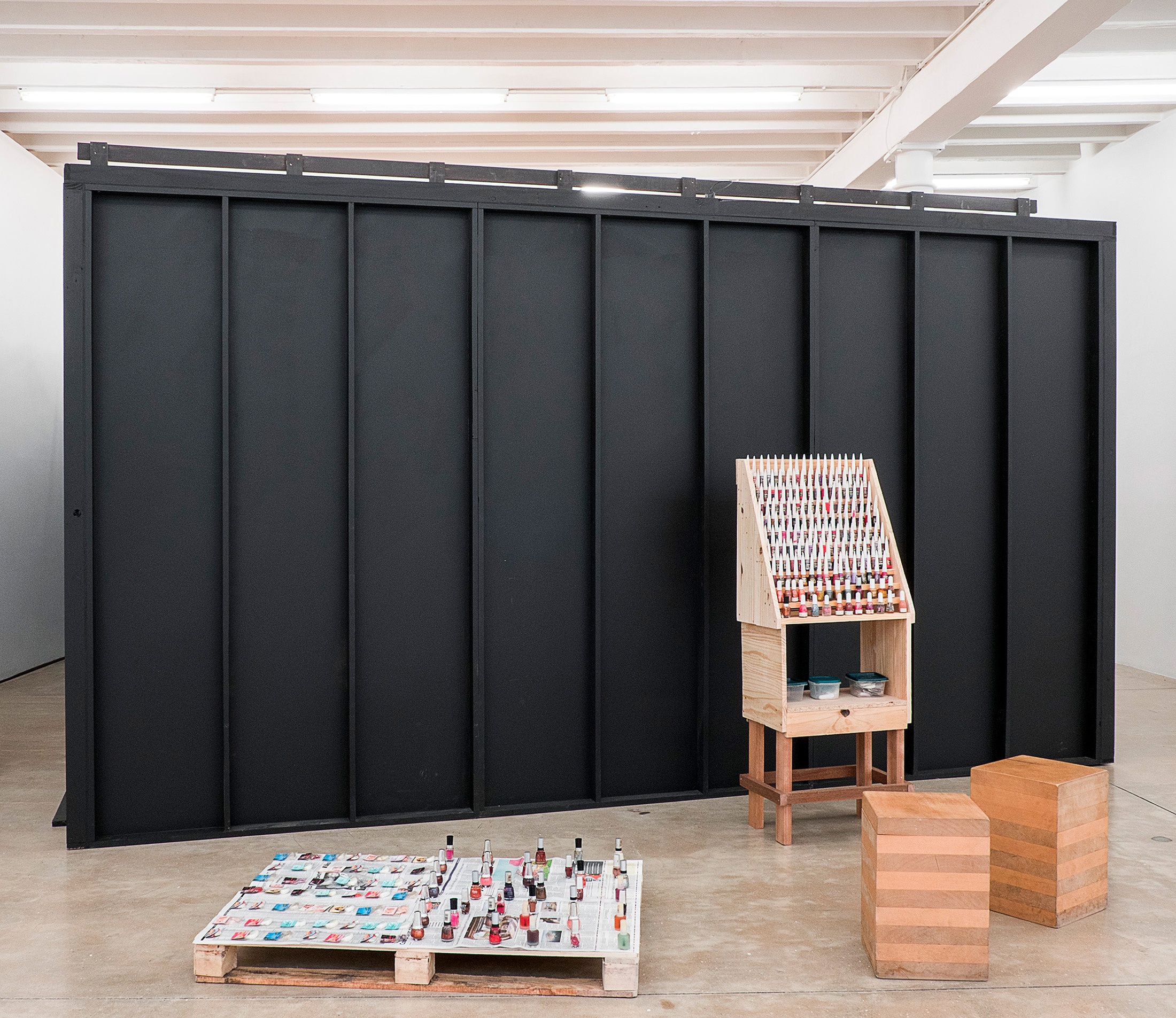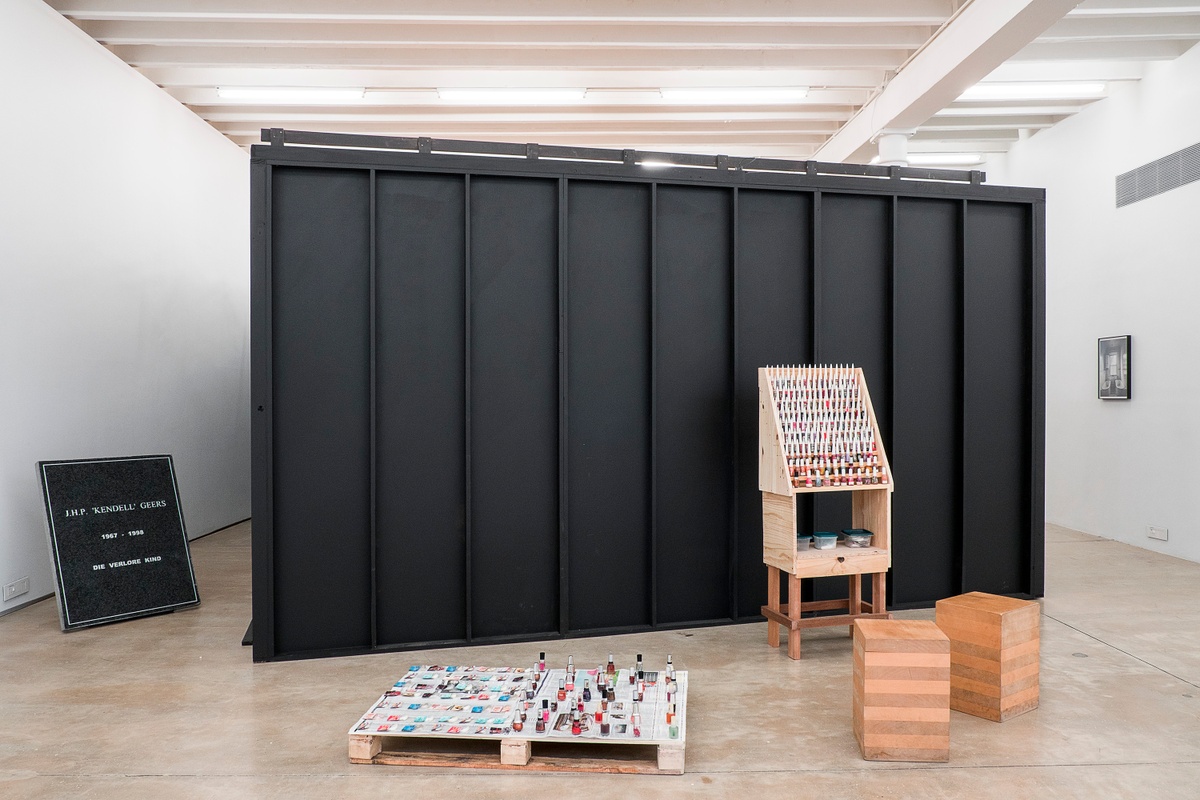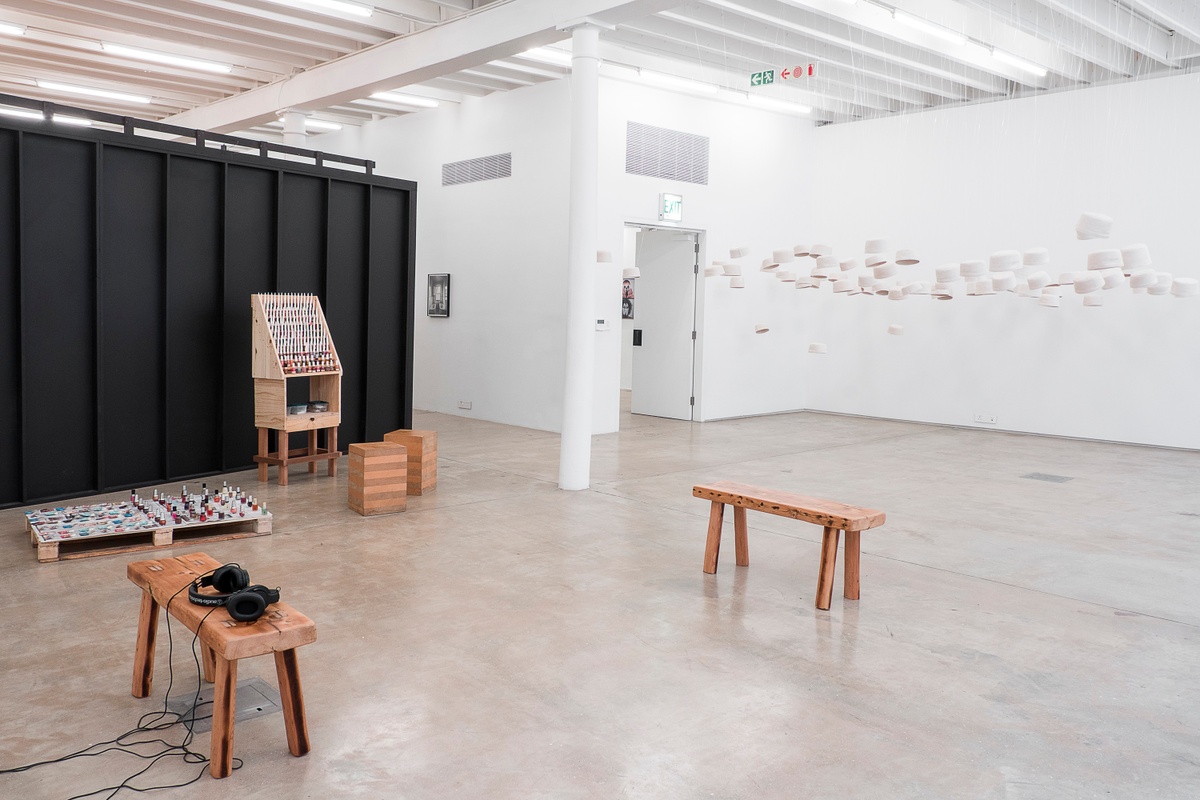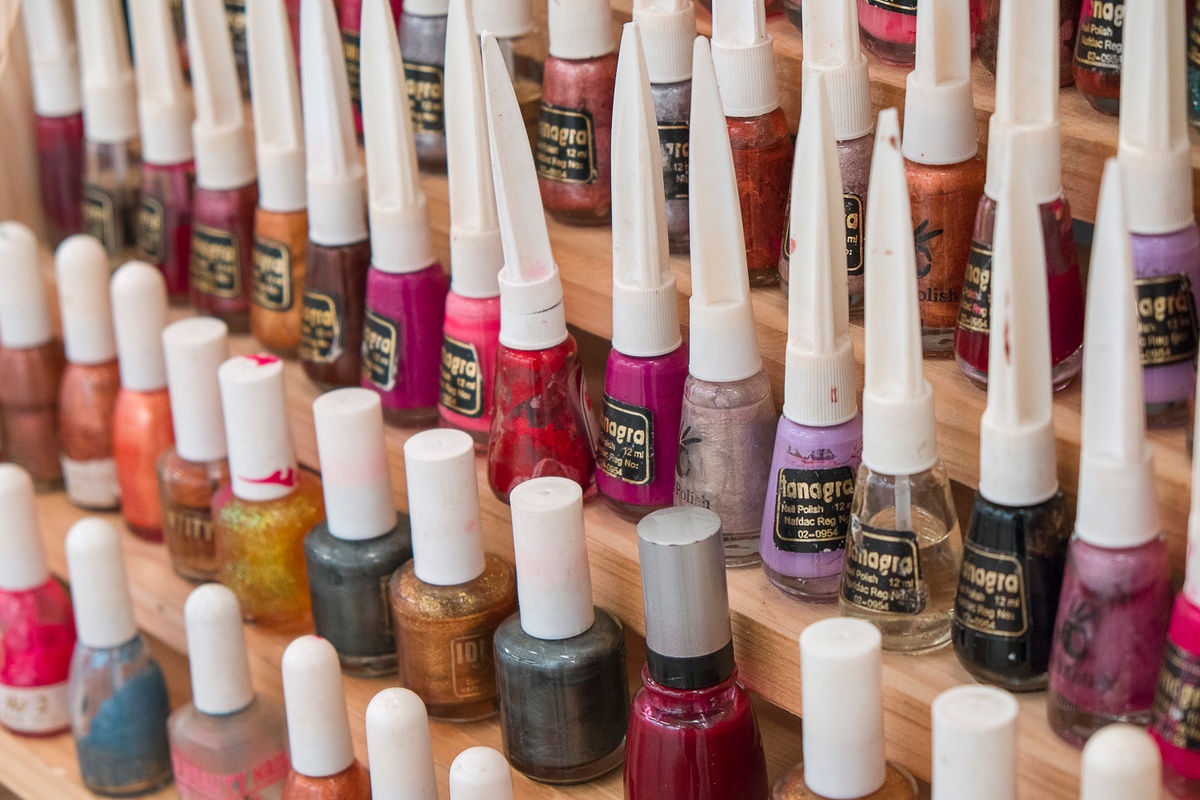Meschac Gaba

Just as the work’s title is a double entendre, its objects too exist in two forms. There is the vernissage of an exhibition opening and the vernissage of nail polish; a participatory artwork and an informal salon. Neither interpretation opposes the other; both alternatives are simultaneously true. Such is Gaba’s deft conceptualism, where everything is as it appears – however it appears – to the viewer. There is no hierarchy of interpretation here. In Vernissage, a sidewalk salon purchased in its entirety from the artist’s hometown of Cotonou, Benin, is transposed into a gallery. On the opening night of the exhibition, visitors are invited to take a seat on a low wooden stool and have their nails painted. Vernissage, vernissage; opening, polish; artistic proposition, economic gesture.
b.1961, Cotonou
“I dream,” Meschac Gaba says, “of a museum without walls, in the form of a village, where artists can live, produce, exhibit, and sell their works.” Best known for his itinerant installation Museum of Contemporary African Art (1997–2002), Gaba considers the haphazard engagements European institutions offer non-Western artists. His Museum expands on the existing institutional form in a series of twelve distinct ‘rooms’ or sites of exchange. Some play on familiar features – a library, a museum restaurant, a gift shop – others on invented offerings, like the Humanist Space and Wedding Room. Seldom is the Museum exhibited in its entirety; its discrete rooms more often appearing as autonomous offerings. The rooms – which exist as architectural propositions rather than four-walled spaces – are furnished with personal objects, artefacts, artworks; a collision of African and Western cultural detritus. To Gaba, the Museum is “not a model, only a question”; a question to which he continues to return. What might a universal understanding of art and its institutions look like? In worrying the role of museums, he asks how they might better serve a global society as spaces of meaningful exchange.



